Seeing is believing in Sydney Theatre Company’s cinetheatre magic
Kip Williams’s combination of film and live theatre is taking dramatics to a whole new level.
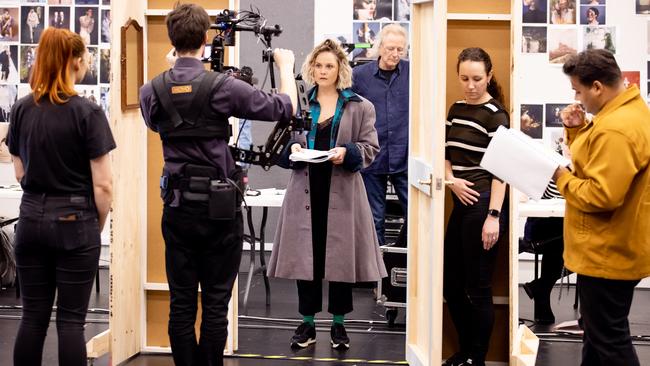
Sydney Theatre Company uses the term cinetheatre to describe Kip Williams’s novel hybrid of real-time cinema and live performance, but it doesn’t really do justice to the astonishing effect on stage. The live camera work and gliding video screens do more than simply enlarge the performance. They bring an extra dimensionality to the stage, a warping of theatre-space and time that is entirely in keeping with the stories being told: tales of the supernatural.
In The Picture of Dorian Gray, now having its third sold-out season at the Roslyn Packer Theatre in Sydney, Eryn Jean Norvill delivers a tour-de-force performance as not one but 26 characters from Oscar Wilde’s novel.
In Williams’s theatrical conjuring, Norvill is seen to transform before our eyes, change persona, duplicate herself. In one scene, Norvill as Dorian takes a seat at a table with projections of herself as six other characters. What better theatrical device could there be for a character at once so singular and duplicitous: a dandy who has sold his soul to retain his youth and handsome looks, while his picture in the attic becomes a portrait of depravity and decrepitude.
While Norvill and crew are rehearsing in one studio at STC’s Wharf Theatre, in the studio next door Ewen Leslie and Matthew Backer are preparing for a return season of another Williams cinetheatre spectacular, Strange Case of Dr Jekyll and Mr Hyde, based on Robert Louis Stevenson’s tale of diabolical transformation. It opened in Sydney last August and is returning for brief seasons at the Perth and Adelaide festivals.
On a recent afternoon, Leslie and Backer are doing a run-through of a scene towards the end of the play when the irrevocably changed Jekyll (Leslie) and his friend Utterson (Backer) are on a chase through a Victorian London underworld. As Backer leads Leslie at pace through one door, then another and another, they are followed by a cameraman, Sam Heesen, guiding the anglepoise arm of a Steadycam camera while peering into the digital display.
“I resolved from my future conduct to redeem the past,” Leslie says, beginning a rapid monologue that continues through the short but hectic scene. They repeat the sequence three, four, five times as Leslie, Backer and Heesen measure their steps to allow for the slightly different stage areas in Perth and Adelaide.
“There is quite a lot that could go wrong,” Backer says afterwards. “Those doors are in shadow, some parts are lit quite differently, your mind starts to play tricks on you. Plus the Steadycams have their own spotlight, so when they are shining in your eye, it is a little dark behind you. So as a team – the cameraman, Ewen and I – we really have to focus.”
Still, accidents can happen. In week three of Jekyll and Hyde at the Roslyn Packer Theatre last year, and feeling tired towards the end of a show, Backer managed to collide with one of the on-stage structures.
“I turned and smacked into a pole but just had to keep going,” he says. “It was a moment when I was tired, and that’s when you can fall into danger.”
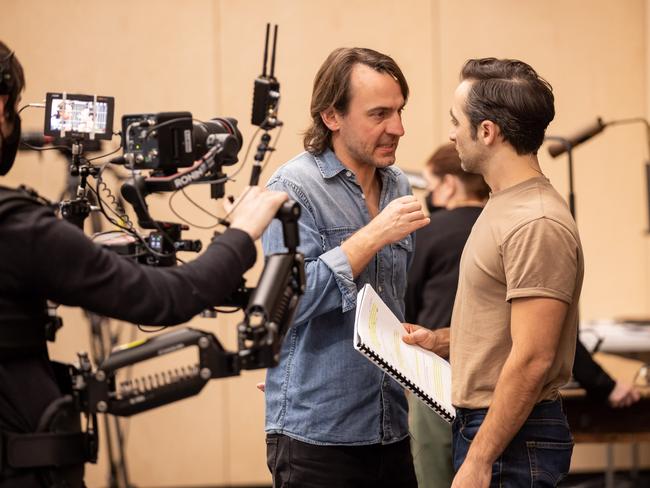
Rehearsals for Jekyll and Hyde are proceeding while Dorian Gray is waiting in the studio next door. Williams, STC’s artistic director and the creator of cinetheatre, is leading rehearsals of both shows simultaneously, which rather boggles the mind. The illusion of cinetheatre is a blend of precision stagecraft coupled with the technological wizardry of supremely agile digital cameras, vision mixing and high-definition screens. The seamless interaction of the two is critical and, in rehearsals, Williams is able to fine-tune the stage picture from a monitor that displays a rendering of the proscenium and the show’s video elements.
Dorian Gray and Jekyll and Hyde are the first two parts of Williams’s projected trilogy of cinetheatre adaptations of late-Victorian Gothic novels. (The third and final instalment is rumoured to have fangs.) His use of multiple cameras and video screens is highly suggestive of the double lives of his characters, and also of the possibilities for misrepresentation inherent in social media. After its Sydney return season, Dorian Gray will travel to the Auckland Arts Festival, and possibly later to New York.
Williams has not yet changed rooms to begin the afternoon’s rehearsal of Dorian Gray, but Jaymi Kniernum is on hand to explain how cinetheatre works from the pragmatic viewpoint of the stage manager. Kniernum has worked on several of Williams’s “camera shows”, starting with the first, Suddenly Last Summer, in 2015. It was her job then to follow the single Steadycam operator and to gather the cable from the stage floor.
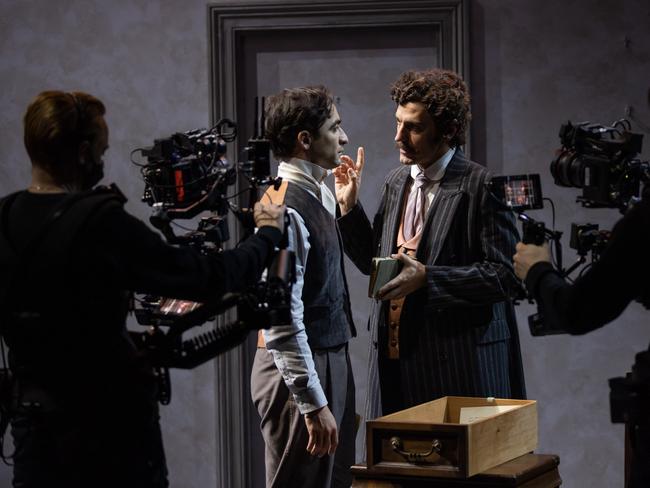
Steadycam is a proprietary system comprising a vest, gimbal and counterweight that eliminates the jerkiness of the camera operator’s movements. Dorian Gray requires two Steadycams (and three operators), three tripod-mounted cameras, and four smartphone cameras: nine cameras in all. These days, wireless technology has removed the trip-hazard cables, but it’s still Kniernum’s job to ensure it all goes without a slip.
Dorian Gray is a one-woman show for an ensemble, as Kniernum describes it, where the on-stage interaction of actor, camera operators and stage hands is tightly choreographed as scenes, costumes and camera angles are changed.
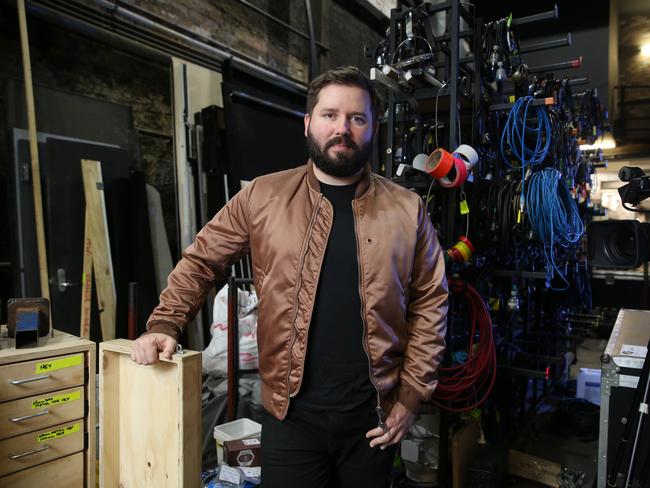
“The quick changes are like we always do backstage in other plays, but now the changes have to appeal to the visual storytelling of the play,” Kniernum says. “In Dorian, even when I am just picking up a prop from the floor, and lifting a tripod, and moving to my next position, I am trying to do all of those moves in sync with EJ (Norvill). EJ will start to stand up, I can stand up; EJ will start to move, I can start to move.”
The movement is mapped out with strips of coloured tape on the studio floor: green arrows, white Ts, yellow crosses, in all some 230 individual points. They mark, for example, the position of cameras in scenes that require a careful overlay of video and live action – such as the moment, early in the play, when Dorian inspects his painted portrait for the first time – where a misalignment of millimetres can spoil the effect.
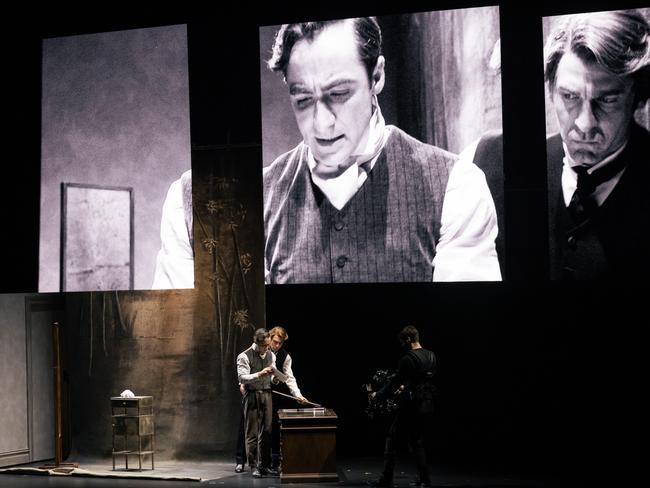
Kniernum, who also does some of the smartphone video shots in the show, points to a yellow cross on the floor. “I start my camera shot here, and then I creep my way to another camera mark there” – she indicates a yellow cross on the floor a metre ahead – “and then I sneak in, and I pull out. I don’t have a mark for my finish position, I just have to remember what the shot looks like.”
As she describes it, cinetheatre allows the audience to enjoy the theatrical illusion of the show while also seeing how some of the magic happens.
“It’s that double perspective that is so unique to these productions – almost that Brechtian element of being able to remove the walls and see the cogs in motion, but also see all of its pieces at the same time,” she says.
In Jekyll and Hyde, Leslie and Backer work together as a partnership, with a silent, on-stage ensemble of men and women in black. Backer says cinetheatre requires a more carefully pitched performance than in some other shows: a constant mediation between playing to the auditorium and playing to the camera.
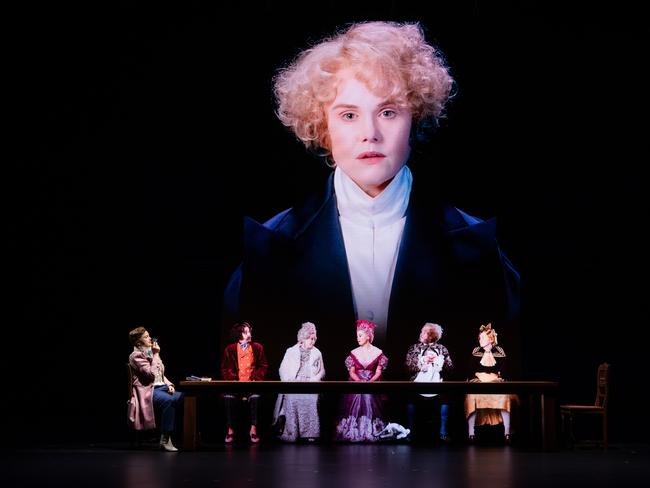
“You have to fill these big theatres, and it has to be theatrical, and on voice, and a little bit bigger,” he says. “But you also have a camera right in your face, so it can’t be too big, because it will be too much on screen. So it’s this fine dance every night of having to land it. Most of the time, I have found presenting to the camera is probably most important, because that’s what the audience is looking at. But there are times when the screens are gone and you have to up your physicality a bit. It’s a wonderful dance.”
Backer has watched Norvill twice in The Picture of Dorian Gray but of course has not seen himself and Leslie in Strange Case of Dr Jekyll and Mr Hyde. Occasionally, he says, he and Leslie in the rehearsal room have gone to look at the monitors which show how the production will look on stage.
“Holy shit, is that what it looks like?” he says. “At some points we’ve decided not to watch it; I think it’s important we keep in our own world. We might become aware our faces are five-foot tall.”
The Picture of Dorian Gray, Roslyn Packer Theatre, Sydney, until February 18. Strange Case of Dr Jekyll and Mr Hyde, His Majesty’s Theatre, Perth, February 11-19; Her Majesty’s Theatre, Adelaide, March 3-12.
-
Two Gothic takes on climate change
The Gothic genre on stage, screen and in books always seems to be lurking in the shadows, waiting for a chance to scare the living daylights.
That’s what’s happening in theatres in Melbourne and Sydney. On Friday the Malthouse in Melbourne opens its new play, Nosferatu, named after FW Murnau’s 1922 vampire film.
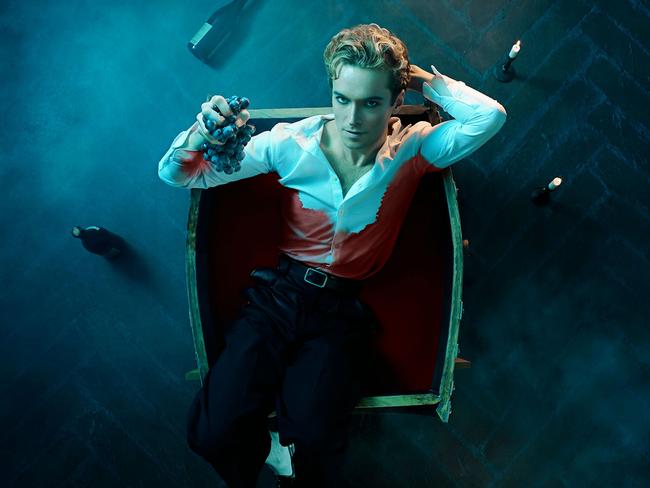
At Sydney Theatre Company, artistic director Kip Williams has caused a sensation with his “cinetheatre” treatment of Victorian Gothic tales, The Picture of Dorian Gray and Strange Case of Dr Jekyll and Mr Hyde. It’s rumoured he’ll make it a trilogy with an adaptation of Bram Stoker’s Dracula.
Another play, Darkness, is being staged as an immersive theatre experience at the Newtown School of Arts building in Sydney. Created by Andrew Bovell, Zoey Dawson, Dino Dimitriadis, Dan Gioannoni and Megan Wilding, Darkness draws on one of the origin stories of Gothic literature: the famously wet European summer of 1816 when Percy Bysshe Shelley and his future wife Mary Godwin, Lord Byron, his mistress Claire Clairmont, and his physician John Polidori were holed up at the Villa Diodati on Lake Geneva. The party amused themselves by writing Gothic stories, including Mary Shelley’s Frankenstein and Polidori’s The Vampyre.
Byron’s poem, Darkness, was inspired by the pall of smoke from the eruption of Mt Tambora, in modern-day Indonesia, that changed weather patterns in Europe. Darkness, the play, takes its cue from those events, but is set in the present or the near future, as the world confronts an ecological crisis.
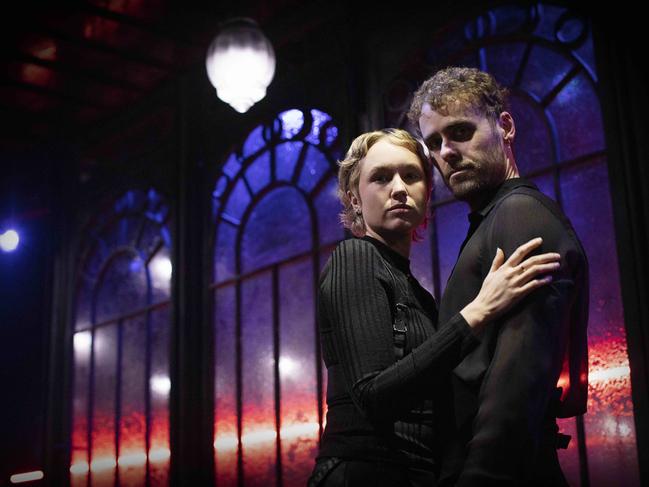
Similarly, Keziah Warner’s Nosferatu at the Malthouse imagines the vampire Orlock as the mysterious player in a modern-day environmental catastrophe, set on the west coast of Tasmania. Warner promises fangs and fake blood, but how is it a Gothic tale?
“I think genre is useful in storytelling in that it offers a new perspective,” she says. “It’s not a lecture on climate change, but it’s a new way in to that conversation.”
Like the undead, the Gothic strain never dies, but comes back to haunt another day.
